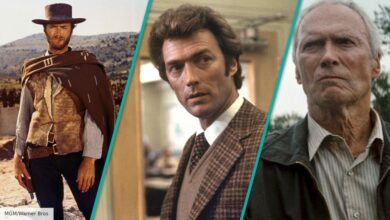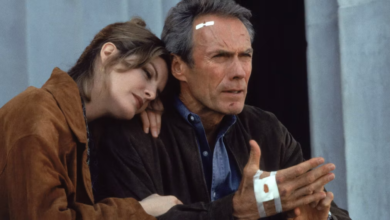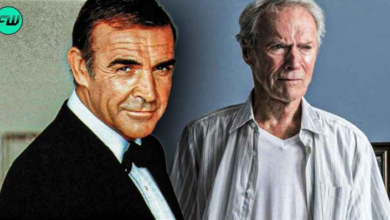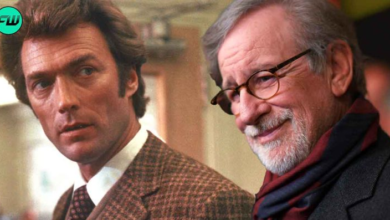Clint Eastwood’s one-of-a-kind incarnation in Bridges of Madison County (1995).
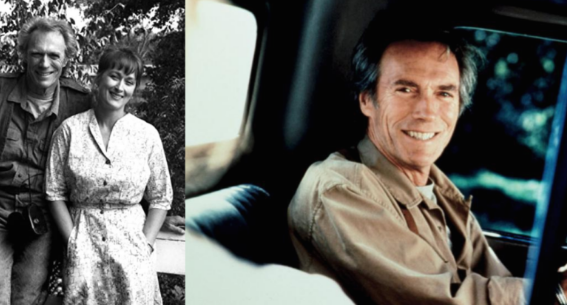
There was a time when Clint Eastwood, in his twin guises of director and movie star, was simple and easy to pin down: a manly, macho, “think with your fists” sort of guy, the kind who was all about Westerns and war pictures and crime movies where the bad guys were easy to sort out and easier to kill. Pepper in a few comedies, but even those were pretty masculine and violent.

This state of affairs took a turn for the weird in the late ’80s, when Eastwood directed Bird, a jazz biopic, and White Hunter, Black Heart, an unclassifiable critique of moviemaking and moviemakers, and ever since then his career has lunged strangely from place to place, sometimes with success and sometimes not, but always exploring: there are many things you can say against Hereafter, for example, but one of them is not that it finds the director resting on his laurels.

Still and all, the film that remains the furthest outlier in the Eastwood canon, I am convinced, simply must be The Bridges of Madison County from 1995, which found the director/star trying his hand at a melodramatic weeper, what they would have called a “woman’s picture” back in the ’40s, which is about the same moviemaking epoch that the film hearkens back to.

That Dirty Harry Callahan, that the Man with No Name, would have seen fit to go for broke and make an unabashed chick flick is still surprising, but not half as surprising as the finished product, which adapts a by-all-accounts disposable romance novel into an absolutely devastating tragic love story, and is among the very best films in Eastwood’s career, as director or as actor.

And yet, it is also not very surprising at all. His entire living filmmaker tries so consistently and so re-recreating the bare-bones essence of factory-made cinema from the golden age of the studios: he is the most old-fashioned of directors His in that respect, and some of his best films have been dusty old formulas given a light contemporary dusting.

The Bridges of Madison County is assuredly a dusty old romance: save for the word “fuck” and some carefully PG-13, fire-dappled lovemaking scenes, there’s hardly a scene in it that wouldn’ve have played, more or less, exactly the same way in a movie made 50 years earlier. Perhaps it is the case that Bridges is more naturalistic, lit and shot to look much more like everyday reality, and acted with none of the swooning excesses that the soap-operatic scenario would have enjoyed in the immediate post-war era. But there’s a much shorter line between this and a Douglas Sirk picture than the vast gulf in personality separation Sirk from Eastwood would suggest.

